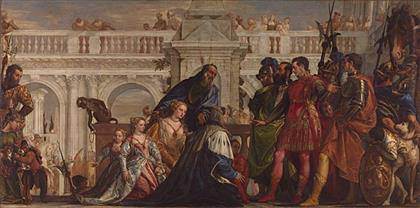
Rembrandt Bugatti
Laufender Panther (Panthère marchant), 1904
Bronze, 21 x 53 x 12 cm.
Private collection
Photo: Peter John Gates

Rembrandt Bugatti
Dackel, mein Hund Wurst, 1905
Bronze, 26 x 53 x 17 cm.
Private collection
Photo: Ken Adlard
Rembrandt Bugatti at Alte Nationalgalerie Berlin From March 28 to July 27, 2014, the Alte Nationalgalerie Berlin presents the first large museum solo show of the sculptor Rembrandt Bugatti (1884–1916) showing around 100 works.]]>
Source: Alte Nationalgalerie Berlin
Rembrandt Bugatti is one of the most remarkable and artisticallyindependent sculptors of the early 20th century. Brother of the legendarydesigner of motorcars, Bugatti produced an oeuvre comprising more than300 works during his short life, unparalleled in terms of intensity and diversityof form. The exhibition in the Alte Nationalgalerie is showing more than 100works in all floors of the museum.
Even though very successful during his lifetime and still being much indemand by enthusiastic collectors all over the world, Rembrandt Bugatti isstill largely unknown to the public. Museums in Paris, Washington andAntwerp have agreed to lend works to the exhibition. The majority of theworks on show comes, however, from international private collections whichare displaying their treasures publicly for the first time in the Nationalgalerie.
Born in Milan as son of the furniture designer Carlo Bugatti, his talent wasdiscovered and fostered from early on. As a young man Rembrandt Bugattihad already found the subject of his life’s work, the animal. While at firstpredominantly depicting cattle he later found more exotic models in thezoological gardens in Paris and in Antwerp: With Bugatti, animals such asanteaters, tapirs, marabous as well as yaks, secretary-birds and kangaroosare introduced as subjects for sculpture for the first time in the Europeanhistory of art.
Following a phase of intensive observation he modelled almost all hissculptures directly in front of the animal itself. Bugatti’s extraordinary sensefor the “right moment” enabled him to capture the essence of the animal’sbeing in a sculpture and thus create incredibly realistic portraits of individualanimals – he was always trying to achieve an accurate record of thecharacteristics, the movements and sensations of his model. Thanks to hiscollaboration with the bronze caster Adrien-Aurélien Hébrard excellentbronze casts of his works became part of many collections. Deeplydistressed by the First World War Bugatti committed suicide in Paris 1916.He was only 31 years old.
Related content
Calder and Abstraction: “From Avant-Garde to Iconic” (exhibition, 2013)
Follow us on:


